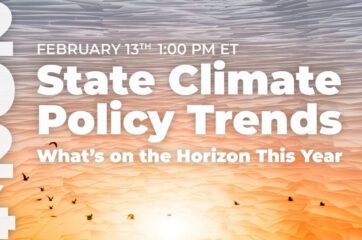Originally published by the Global Center for Climate Justice
Author: Daniel Faber, Senior Research Fellow, Global Center for Climate Justice
“The money that is funding this aggression comes from the same [place] as climate change does: fossil fuels. If we didn’t depend on fossil fuels, [Russia] would not have money to make this aggression.”
– Svitlana Krakovska, Ukrainian meteorologist and member of the United Nations Intergovernmental Panel on Climate Change (IPCC)
On February 24, 2022, Russian President Vladimir Putin launched an unprovoked large-scale military invasion of Ukraine with some 200,000 soldiers, tanks, armored personnel carriers, artillery, missiles, and fighter jets. The world has been watching with alarm and outrage at the injustice and brutality of the Russian attack on a democratic republic of more than 40 million people. According to the Office of the U.N. High Commissioner for Human Rights, as of March 15 reportedly 780 Ukrainian civilians had been killed. Major cities are now being bombed indiscriminately, and over three million people have been forced to leave everything behind and flee the country in fear for their lives. This includes some 1.5 million children, a rate of just under one per second since the invasion began.
Most are flooding across neighboring borders into Poland, Hungary, and Romania. As stated by Filippo Grandi, the U.N. High Commissioner for Refugees, “I have worked in refugee emergencies for almost 40 years, and rarely have I seen an exodus as rapid as this one. Hour by hour, minute by minute, more people are fleeing the terrifying reality of violence… And unless there is an immediate end to the conflict, millions more are likely to be forced to flee Ukraine.” Estimates are that seven million Ukrainians could be displaced by Putin’s war in the coming weeks. As a result, a massive humanitarian crisis is now quickly unfolding, and will only worsen with time under the Russian’s ‘scorched earth’ campaign.
What is Putin’s Motivation for Invading Ukraine?
The Russian invasion of Ukraine represents the most serious military conflict in Europe since World War II. Putin is risking much. And so, the key question is the following: what is Putin’s motivation for the takeover of Ukraine?
One potential answer is surprisingly simple. Putin wants to control Ukraine’s vast oil and gas reserves, pipelines, and water resources (a point made all the more urgent by the increasingly severe impacts of climate change in Crimea). In so doing, he is attempting to protect Russia’s position as the leading supplier of fossil fuels to the European Union (E.U.) and the larger world economy.
As Europe’s only petro-state, oil and gas are the economic lifeblood of Russia. The country’s economy is not very developed industrially, nor is it diversified. Russia’s Gross Domestic Product (GDP) is similar to that of Italy, though it has more than twice as many people. Virtually the entire economy is oriented to the exploitation of its vast fossil fuel resources for sale in global energy markets. As famously stated by Jason Furman, a top economic advisor to U.S. President Barack Obama, Russia is little more than “a big gas station.” Russia is the world’s third largest oil producer after the United States (U.S.) and Saudi Arabia, accounting for 12 percent of global output. Russia also possesses the world’s largest proven reserves of natural gas, most of which are in Siberia. These huge supplies also have enabled the country to become the world’s leading exporter and second largest producer of natural gas after the U.S., some 17 percent of the total global output. All that fossil fuel wealth is not created without costs. Russia is the fourth-largest annual contributor to greenhouse gas emissions worldwide.
The revenues gained from the sale of oil and gas exports are the backbone of the modern Russian economy and Putin’s primary source of power. Oil and gas constitutes over 60 percent of the country’s exports. Exporting fossil fuels accounts for as much as 50 percent of the entire Russian government’s budget and represents about 30 percent of Russia’s entire GDP (and that was before the Russian-engineered energy crisis sent prices soaring in 2021). Putin uses these massive export earnings to fund the military and his own domestic security apparatus, to build the world’s largest nuclear arsenal, to support the vast government bureaucracy, and to reward his political allies. Putin is also diverting enormous sums of these oil and gas revenues into his own personal bank accounts and private investment funds inside and outside of Russia. He is now one of the wealthiest people in the world, his vast fortune estimated to be in the neighborhood of $200 billion. Perhaps more than anything else, the material self-interests of Putin and his political accomplices play a major role in his ambitions in Ukraine.
Given the lack of oil and gas production in other E.U. countries, a type of mutual dependency now exists between Moscow and many of its customers. Before the invasion, Europe was buying 40 percent of its entire natural gas supplies and a quarter of its crude oil from Russia. According to Javier Blas writing for Bloomberg, the United Kingdom (U.K.), E.U. and U.S. collectively spent more than $700 million a day buying Russian oil and gas prior to the invasion. Germany, the world’s fourth largest economy, is particularly vulnerable. It imports nearly 50 percent of its natural gas from Russia, on top of 45 percent of its coal and 34 percent of its oil.
This dependency of the E.U. (and the world) on Russian oil/gas exports is a likely factor in why President Putin calculated he could launch an attack on Ukraine without suffering catastrophic repercussions from the West.
But Russia is also dependent upon the West. Europe is particularly important to Putin, as it buys around 70 percent of Russia’s gas exports and half of its oil exports, according to official U.S. data. The imposition of economic sanctions and restrictions on the flow of these fossil fuels to the E.U. and the U.S. may soon place the Russian government in a political straightjacket, and perhaps even initiate the “beginning of the end” for the Putin regime. The dependency of the Russian autocracy on oil/gas is critically important for understanding Putin’s geopolitical motivations, particularly with respect to his ambition to control the vastly rich oil/gas fields of Ukraine and the Crimean region.
First of all, Ukraine represents a key point of transit for oil/gas exports coming out of Russia and going to the E.U. Putin’s desire to establish and control pipeline routes for Russian oil and gas exports led him to invade Georgia in 2008, to support the dictatorial regime of Bashar al-Assad in Syria in 2011, and to annex Crimea in March 2014. In Putin’s estimation, Greater Ukraine is the next location of critical energy resources to be brought under Moscow’s control.
The construction of the Ukrainian gas transit system goes back to the German Neue Ostpolitik (New Eastern Policy) of the 1970s. For many years, Ukraine was the primary corridor for the transfer of Soviet – and later Russian – gas to Western Europe. However, with the completion of the first Nord Stream pipeline in 2012, and other pipeline routes that circumvent Ukraine, Russia lessened its dependency on this traditional corridor for the delivery of their fossil fuels to Europe. Transporting fossil fuels through Ukraine is extremely costly for Russia, and its pipeline contracts with the Ukrainian government are up for renewal in 2024. Russia had plans to completely cease all of their gas exports through Ukraine entirely in the near future, and save billions of dollars in fossil fuel tariffs paid annually to the Ukrainian government, but that would not be necessary with a Moscow-friendly regime in Ukraine.
Still, the economic boon of possessing Ukraine’s gas infrastructure, including their vast underground storage facilities and compressor stations, is enormous. Ukrainian capacities to store natural gas amount to more than 31 billion cubic meters (bcm). If fully exploited, Ukraine could hypothetically add almost one third to the approximately 100 bcm of storage space that E.U. member states currently hold as a whole. Thus, it is no surprise that the energy consultancy Wood Mackenzie recently suggested that Ukraine holds the key to Europe’s gas current storage crunch. To attract foreign investment from Western oil companies, Ukraine adopted regulatory modifications in 2019 making it easier for foreign firms to use their available storage capacity. In response, during the first nine months of 2020, foreign energy firms pumped 7.9 bcm of gas to Ukraine for storage, an amount several times higher than the volume of foreign gas stored in Ukraine during the entire year of 2019. This served to undermine Russia’s control over the European gas market.
But perhaps most importantly, a substantive motivation for Putin’s invasion is the potential economic threat posed by Ukraine’s untapped fossil resources to Russia’s larger petro-dominance over Europe. It was recently discovered that Ukraine itself is a potential large-scale producer of oil/gas that could supplant Russia in the European market. Excluding Russia’s gas reserves in Asia, Ukraine today holds the second biggest known gas reserves in Europe – some 1.09 trillion cubic meters of natural gas. This is second only to Norway’s known resources of 1.53 trillion cubic meters. Potential shale gas hotspots were especially promising in the Donetsk and Kharkiv regions in the East, and around the Carpathians in the West — areas where Russia has focused many of its military forces during the invasion.
Although these enormous reserves of energy are largely undeveloped, the E.U. and Western oil companies were eager to diversify Europe’s gas supply by investing in oil and gas development in Ukraine. According to some estimates, the E.U. will import around 90 percent of the gas it consumes by 2030. Lacking the financial capital and technical expertise to extract fossil fuel supplies themselves, Ukraine was beginning to turn to Western oil companies to develop their energy sources.
Exploration and drilling rights were recently granted to Shell and ExxonMobil. In the eyes of Putin, it would not be long before more Western Foreign Direct Investment (FDI) would follow, along with Ukraine’s admission into the European Union, and perhaps even the North Atlantic Treaty Organization (NATO). If successful, the creation of an alternative liberal democratic petro-state aligned with the West and under the military protection of NATO could present an alternative political-economic model to the Russian people and undermine the flow of resources to Putin and the Russian autocracy.
Ukraine becoming increasingly attractive to E.U. and U.S. policymakers for petro-capital investments would lessen (and perhaps even eventually eliminate) European dependency on Russian hydrocarbons. At the least, Europe’s bargaining position for commanding lower prices on Russia’s oil/gas exports would be strengthened considerably. The closer proximity of Ukraine to the E.U., and its well-developed gas transportation infrastructures (among the best of any country in the world), could prove instrumental in giving the country’s fossil fuel exports a considerable competitive advantage over Russia in world markets. Then the flow of petro-dollars into the coffers of the Russian state, and Putin’s own bank accounts, could be greatly reduced.
Russian Petro-Imperialism and the Climate Crisis in Crimea
In February 2014, the pro-Russian President of Ukraine, Viktor Yanukovych, was toppled in a popular revolution in Kiev. Putin responded by quickly invading the Crimean Peninsula of Ukraine and annexing the region. In so doing, the Russians also took direct control of two-thirds of Ukraine’s coastline and by extension, an estimated 80 percent of Ukraine’s potential offshore oil and gas reserves. This is a maritime zone containing underwater resources worth trillions of dollars. Ukraine’s Exclusive Economic Zone — an area that extends 200 nautical miles from land and is reserved for a country’s exclusive use of mineral and marine resources — potentially contains more than two trillion cubic meters worth of natural gas, mostly concentrated around the Crimean peninsula.
These reserves exist in nine so-called “blocks” available for licensing in Ukraine’s Black Sea region, with the potential of each block ranging from 92 billion cubic meters (bcm) to over 500 bcm, according to an April 2018 survey conducted by Deloitte. Putin immediately issued a treaty of annexation between the newly declared Republic of Crimea and the Russian Federation. In Article Four, Section Three, Russia expanded its boundaries through the adjacent Black and Azov Seas. Putin intended to place Russia first in the rush to exploit the vast oil and gas reserves that lay underneath the Black Sea off the coast of Crimea and Ukraine. Now, these reserves are being developed by Russia.
In annexing Crimea, Russia dealt a severe blow to Ukraine’s aspirations to become a fossil energy powerhouse. In the invasion of Crimea, Russia also seized subsidiaries of Ukraine’s state energy conglomerate Naftogaz operating in the Black Sea, and stole billions of dollars of equipment for Gazprom, Russia’s state-owned energy company. As stated by the Forbes investigative reporter Ariel Cohen, “In one fell swoop, Russia ended Ukraine’s offshore oil and gas operations and bolstered its own.”
Through the annexation of Crimea, Russia also gained control over the strategic port city of Sevastopol. This is one of the few ice-free ports that the Russian Navy can use during the winter months to patrol the Black Sea and Mediterranean Sea. As a result, it possesses great military significance to Russia. But in recent years, the ability of Russia to successfully occupy Crimea is being undermined by climate change.
Covered by dry and arid steppes and some salty marshes, there are little indigenous freshwater supplies for use by the local people, industry, agriculture, or Russia’s military. At the time the Crimean peninsula was annexed by Russia, the majority of the water reaching the region traveled through the North-Crimean channel, a canal built during the Soviet era for transporting water from the Dnieper River in Ukraine into the peninsula. After the Russian takeover of Crimea, Ukraine blocked this supply of water in protest, and the channel carrying 85 percent of the peninsula’s water from Ukraine was filled with concrete.
The Russian-backed administration in Crimea did not come up with adequate solutions to the water crisis, and instead increased their reliance on reservoirs and wells. Although this approach initially worked, climate change is now throwing Crimea into crisis. In June of 2020, three all-time high temperature records were set in Simferopol. The average temperature at the time was seven to eight degrees Celsius higher than the norm. Dry and hot weather is typical of the peninsula, but this time the heat waves were off the charts.
The drought and high temperatures lasted the whole summer and the first half of autumn, bringing more heat records than rains. 2020 became the driest year ever on record in Crimea since record keeping began 150 years ago. Crimean natural reservoirs became dangerously shallow, and over-taxed underground wells became the only source of water for local households. This is not an anomaly. For the past ten years, the amount of precipitation in the Russian South, the East of Ukraine, and in Moldova has decreased five to 14 percent. The region is drying up.
In an era of climate change, living conditions for more than two million people on the peninsula are becoming more difficult. In response, the Russian government is laying out billions of dollars a year to support Crimean industry, tourism and agriculture in a drying climate. This created another motivation for Russia’s invasion of Ukraine: to seize control over the Dnieper River and re-divert its water back to Crimea. After the invasion, Russian troops immediately demolished the concrete barrier holding back the river waters. The irony is that Russia’s oil and gas exports, and its own massive greenhouse gas emissions, are fueling such climate change impacts in the first place. This fact should not be lost on our world leaders.
Opportunism by the U.S. Oil Industry to Profit Off of the Invasion
Even as some fossil fuel companies are stepping away from investments in Russia, we are already seeing the industry move to exploit this devastating war by pushing for more oil and gas production and infrastructure in the United States and elsewhere. In the face of the higher oil and gas prices slamming consumers all over the world, Big Oil is also using this as an opportunity to relax rules to protect the environment. As stated in a Houston Chronicle op-ed by Anne Bradbury, head of the American Exploration and Production Council, shortly after the invasion began, “The United States can tilt the balance of power in Europe by increasing liquefied natural gas exports to the continent, helping to reduce our allies’ decades-long dependence on Russian natural gas — and the economic, political, and military vulnerabilities that accompany it.” In a statement released on the brink of the invasion, U.S. president Joe Biden said that:
“Through his actions, President Putin has provided the world with an overwhelming incentive to move away from Russian gas and to other forms of energy.”
While there is no doubt that increasing U.S. gas supplies to Europe could offset Europe’s dependency on Russian fossil fuel exports in the long-term, it would prove to be far too late to help the current moment. Boosting shipments requires time-consuming and widely expensive construction projects of oil/gas export facilities in the U.S. It would also require building many more receiving terminals in Europe’s already congested ports.
Furthermore, U.S. oil production has already increased dramatically since the beginning of the global pandemic, and averaged some 630,000 barrels per day last year alone. It is expected to grow to 800,000 barrels a day by the end of the year, according to Reuters energy analyst John Kemp and the DWS Group, an asset management firm. But the United States would need to raise its production rate of 12 million barrels a day by nearly 50 percent to replace what is being exported by Russia, a massive jump that is virtually impossible to achieve anytime soon. Even if it was achievable, it would take years. In this respect, the calls of Big Oil are somewhat disingenuous, and a smokescreen to promote their own economic agenda.
Europe is in a similar predicament. Carbon Brief recently reported that the UK government’s advisory Climate Change Committee noted that when new projects in the North Sea are given a development license, it takes an average of 28 years for them to actually start producing oil and gas. Similarly, when the UK was seriously considering developing a domestic shale gas industry, it was widely expected that it would take a decade to scale up, as the Guardian has reported. None of this will help address the war or rising energy prices right now, and will only harm efforts to transition away from fossil fuels and guard the planet against climate change.
The Green Path Forward
The Russian invasion is symbolic of the need to end the addiction to fossil fuels. This is the time for Europe and the rest of the world to expedite the transition to just renewable energy systems, especially in the face of higher oil and gas prices. To do otherwise is complete madness in the face of the growing threats posed by the planetary emergency that is climate change.
However, we are now seeing some progress on this front from world leaders. The European Commission’s Ursula von der Leyen and the UK’s Boris Johnson have both recently emphasized clean energy and alternative fossil fuel supplies. As stated by the major British publication The New Statesman, “Net-zero is the energy answer to Russian aggression, and “green energy, not gas, is the future.” Significantly, the German government is looking to respond to the crisis by accelerating the adoption of renewable electricity to meet 100 percent of power demand by 2035, according to Reuters.
Meanwhile, the Washington Post reports that the European Commission will launch “a strategy to break free from Russian gas” by cutting demand for the fuel by 40 percent by 2030 – a reduction larger than current supplies from Russia. EurActiv reported that a leaked draft of the document stated:
“The best solution for more energy resilience, less dependence from gas imports and lower prices is the acceleration of the implementation of the European Green Deal. Rapid implementation of the Fit for 55 measures and in particular investments in renewables and energy efficiency is the best answer for the future.”
These are hopeful signs. Perhaps Putin’s reprehensible actions will serve as a catalyst for a worldwide transition to clean, renewable energy. In his thirst for power, Putin has declared war not only on Ukraine, but also the planet. The invasion of Ukraine has been years in the making, hearkening back even to before Russia annexed Crimea in 2014. Putin’s real animus is that Ukraine’s vast reserves of oil and gas must never escape Russian control. He aims to secure the continued power of Russia as a super petro-state, even if it means destroying Ukraine (and eventually our climate) in the process.
Like the gas extraction on which it depends, Putin’s worldview is an aging dinosaur on the verge of extinction. His actions are only serving to isolate the country politically. Russia is no longer a G8 member, and its influence is waning in Central and Eastern Europe. The attack on Ukraine is now seen by the world as a crime against humanity. Public opposition to Putin’s policies by ordinary Russians is now appearing for the first time in public demonstrations, and these are sure to intensify as Western sanctions begin to severely impact the Russian people and economy. Russia is alone in its war against the Ukrainian people. In the end, his actions show how the geopolitics of oil ultimately undermines our democratic institutions, contributes to war and military conflict, enables authoritarianism, and harms both people and the planet.
If we care about democracy, human rights and climate justice, we must stand with the people of Ukraine. We must support them not only in reclaiming their country, but include them in a rapid transition away from fossil fuel dependence and its attendant horrors. It is time for the world to break with petro-state extractivism, and put our effort into building a just and sustainable future.
Acknowledgments:
We would like to extend some special thanks to Nina Schlegel, Muskaan Khemani, and Lauren Goldberg at the Global Center for Climate Justice. I would also like to thank Hannah Boylan, Mary Calabria, Kay Fleischner, Sophia Samaha, and Sarah Smails – for their invaluable research assistance on this issue.
The Global Center for Climate Justice is a multidisciplinary research and resource center dedicated to advancing a more transformative and emancipatory climate justice politics. Such an approach demonstrates how unjust power relations are the root cause of the climate crisis, and how deep structural reforms and systemic changes of these power relations are required to create a more just and sustainable future for all. In this respect, we take an intersectional approach to our work, analyzing the linkages between ecological crises, class exploitation and inequality, systemic racism, gender oppression, political domination, neo-colonialism, and corporate power structures. Such an approach is key to creating solidarity among people from different walks of life, and to build a mass-based multi-class, multi-racial, international and intergenerational movement for climate justice, capable of taking on the most powerful corporations and governments in the world. By linking deep solutions to the climate crisis to the resolution of other major social injustices, we aim to demonstrate the liberatory potential of the climate justice movement. Within our newsletter Praxis for the Planet and on this website, we present major reports, informational briefs, Green New Deal Resource Hub, webinars and workshops, toolkits for activists, among other resources. Our ethos aims to raise an inspirational vision of how the climate crisis can serve as a catalyst for creating a new type of society that truly meets the needs of people and the planet.










